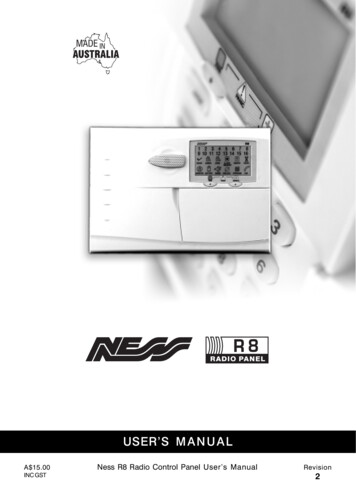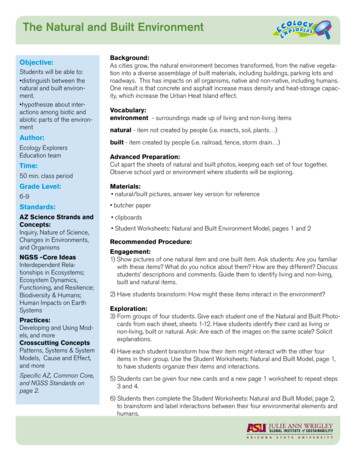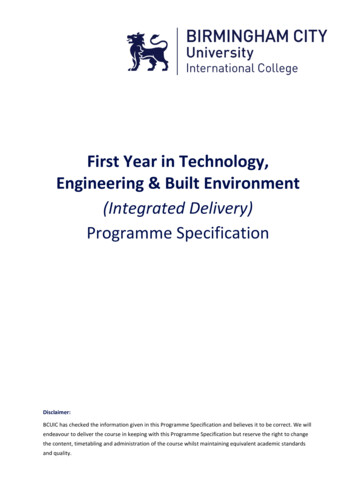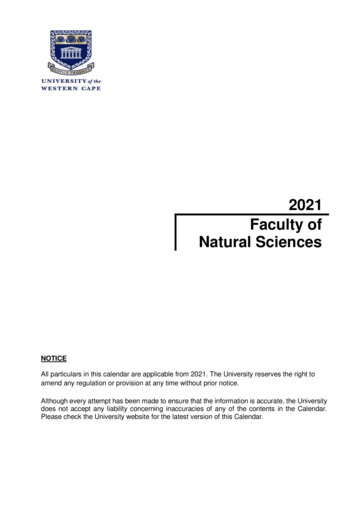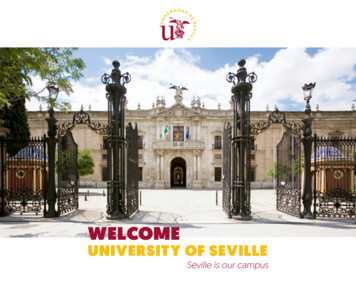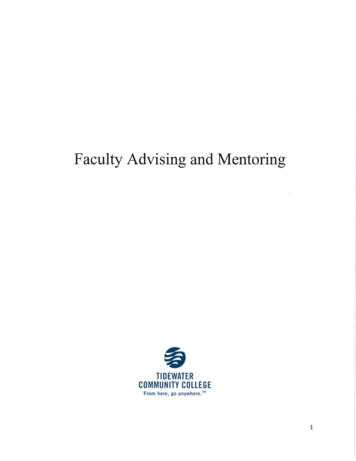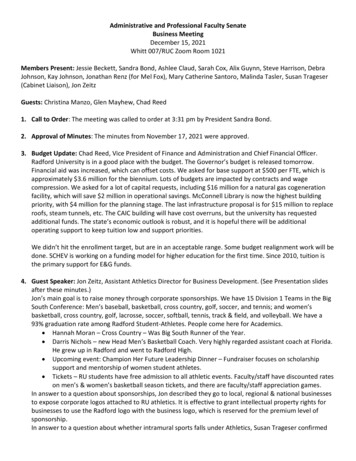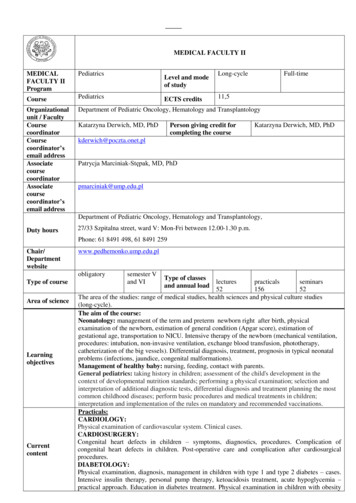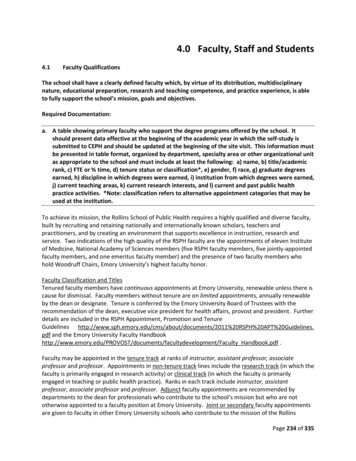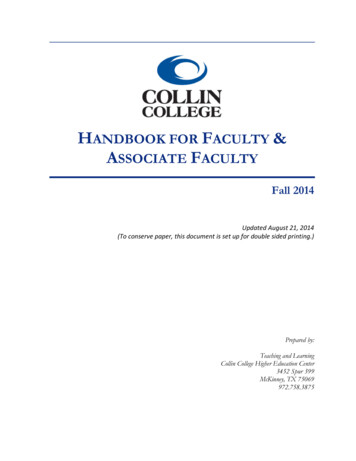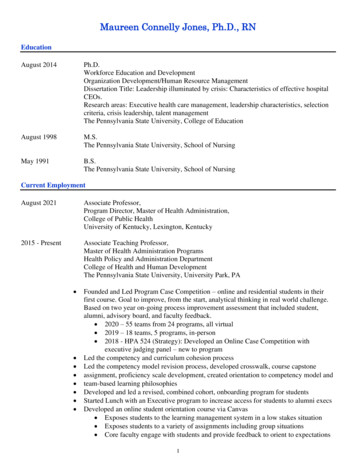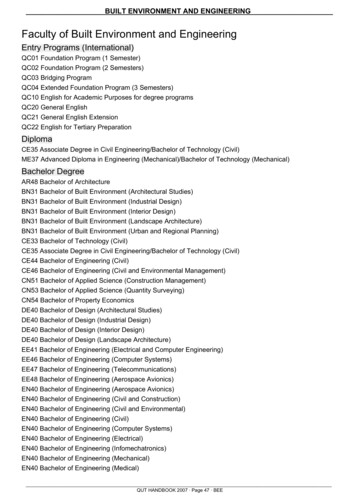
Transcription
BUILT ENVIRONMENT AND ENGINEERINGFaculty of Built Environment and EngineeringEntry Programs (International)QC01 Foundation Program (1 Semester)QC02 Foundation Program (2 Semesters)QC03 Bridging ProgramQC04 Extended Foundation Program (3 Semesters)QC10 English for Academic Purposes for degree programsQC20 General EnglishQC21 General English ExtensionQC22 English for Tertiary PreparationDiplomaCE35 Associate Degree in Civil Engineering/Bachelor of Technology (Civil)ME37 Advanced Diploma in Engineering (Mechanical)/Bachelor of Technology (Mechanical)Bachelor DegreeAR48 Bachelor of ArchitectureBN31 Bachelor of Built Environment (Architectural Studies)BN31 Bachelor of Built Environment (Industrial Design)BN31 Bachelor of Built Environment (Interior Design)BN31 Bachelor of Built Environment (Landscape Architecture)BN31 Bachelor of Built Environment (Urban and Regional Planning)CE33 Bachelor of Technology (Civil)CE35 Associate Degree in Civil Engineering/Bachelor of Technology (Civil)CE44 Bachelor of Engineering (Civil)CE46 Bachelor of Engineering (Civil and Environmental Management)CN51 Bachelor of Applied Science (Construction Management)CN53 Bachelor of Applied Science (Quantity Surveying)CN54 Bachelor of Property EconomicsDE40 Bachelor of Design (Architectural Studies)DE40 Bachelor of Design (Industrial Design)DE40 Bachelor of Design (Interior Design)DE40 Bachelor of Design (Landscape Architecture)EE41 Bachelor of Engineering (Electrical and Computer Engineering)EE46 Bachelor of Engineering (Computer Systems)EE47 Bachelor of Engineering (Telecommunications)EE48 Bachelor of Engineering (Aerospace Avionics)EN40 Bachelor of Engineering (Aerospace Avionics)EN40 Bachelor of Engineering (Civil and Construction)EN40 Bachelor of Engineering (Civil and Environmental)EN40 Bachelor of Engineering (Civil)EN40 Bachelor of Engineering (Computer Systems)EN40 Bachelor of Engineering (Electrical)EN40 Bachelor of Engineering (Infomechatronics)EN40 Bachelor of Engineering (Mechanical)EN40 Bachelor of Engineering (Medical)QUT HANDBOOK 2007 · Page 47 · BEE
BUILT ENVIRONMENT AND ENGINEERINGEN40 Bachelor of Engineering (Telecommunications)EN40 Bachelor of Engineering - Dean's Scholars ProgramIX25 Bachelor of Engineering (Software Engineering)ME36 Bachelor of Technology (Mechanical) Conversion ProgramME37 Advanced Diploma in Engineering (Mechanical)/Bachelor of Technology (Mechanical)ME40 Bachelor of Engineering (Infomechatronics)ME41 Bachelor of Engineering (Mechanical)ME41 Bachelor of Engineering (Mechanical) Conversion Program from Bachelor of TechnologyME36/ME37ME48 Bachelor of Engineering (Medical)PS47 Bachelor of SurveyingUD40 Bachelor of Urban Development (Construction Management)UD40 Bachelor of Urban Development (Property Economics)UD40 Bachelor of Urban Development (Quantity Surveying)UD40 Bachelor of Urban Development (Spatial Science)UD40 Bachelor of Urban Development (Urban and Regional Planning)Bachelor Degree (Double)IF21 Bachelor of Engineering (Electrical)/ Bachelor of MathematicsIF28 Bachelor of Engineering (Electrical)/Bachelor of BusinessIF59 Bachelor of Engineering (Electrical)/Bachelor of Information TechnologyIX28 Bachelor of Business / Bachelor of EngineeringGraduate CertificateBN85 Graduate Certificate In Built Environment and EngineeringCN81 Graduate Certificate in Project ManagementCN90 Graduate Certificate in Property EconomicsIX97 Graduate Certificate In Research CommercialisationME75 Graduate Certificate in Engineering ManagementPS75 Graduate Certificate in Landscape TechniquesPS82 Graduate Certificate in Planning StudiesGraduate DiplomaAR61 Graduate Diploma in Industrial DesignAR62 Graduate Diploma in Interior DesignCN64 Graduate Diploma in Project ManagementCN91 Graduate Diploma in Property EconomicsDB69 Graduate Diploma in Urban DesignEE67 Graduate Diploma in Computer and Communications EngineeringPS66 Graduate Diploma in Landscape ArchitecturePS72 Graduate Diploma in Urban and Regional PlanningPS74 Graduate Diploma in GeomaticsPS78 Graduate Diploma in Geographic Information SystemsMasters Degree (Coursework)BN87 Master of Engineering ManagementBN88 Master of Infrastructure ManagementBN89 Master of Project ManagementQUT HANDBOOK 2007 · Page 48 · BEE
BUILT ENVIRONMENT AND ENGINEERINGCE74 Master of Engineering Science (Civil Engineering)CE75 Master of Engineering Science (Civil Engineering Studies)CN77 Master of Project ManagementCN92 Master of Property EconomicsDB73 Master of Built Environment (Urban Design)DE50 Master of Design (Urban Design)EE74 Master of Engineering Science (Computer and Communications Engineering)EE77 Master of Engineering Science (Electrical Engineering Studies)EN40 Bachelor of Engineering - Dean's Scholars ProgramEN50 Master of Engineering (Systems)ME76 Master of Engineering ManagementME80 Master of Engineering Science (Mechanical Engineering Studies)PS70 Master of Urban and Regional PlanningPS71 Master of Landscape ArchitectureUD50 Master of Urban Development (Urban and Regional Planning)Masters Degree (Research)BN71 Master of Applied Science (Research)BN72 Master of EngineeringDoctoralCN89 Doctor of Project ManagementIF49 Doctor of Philosophy (Built Environment, Engineering)Study Abroad (Non-degree)NA05 International Visiting StudentsNA06 International Visiting StudentsUniversity wide unit setsUnit sets: Accounting and EconomicsUnit sets: Advertising, Marketing and Public RelationsUnit sets: CommunicationUnit sets: Corporate SystemsUnit sets: Creative IndustriesUnit sets: Environmental StudiesUnit sets: Health and PsychologyUnit sets: Information TechnologyUnit sets: International ExchangeUnit sets: International StudiesUnit sets: LanguagesUnit sets: ManagementUnit sets: Mathematics and StatisticsUnit sets: Multimedia and TechnologiesUnit sets: Physical and Chemical SciencesUnit sets: ScienceUnit sets: Society and CultureQUT HANDBOOK 2007 · Page 49 · BEE
BUILT ENVIRONMENT AND ENGINEERINGOVERVIEWQUT’s Built Environment and Engineering Faculty is allabout changing and growing to better meet the needs ofstudents, industry and the professions.The real-world does not stand still and neither do ourcourses. Industry partners and professional bodies areclosely involved in our course development and are increasingly demanding graduates with more breadth andsuperior skills in dealing with clients and other professionals.We work hard to ensure all courses are fully recognisedor accredited both in Australia and overseas. Sometimesthis puts limits on how much choice students have inwhat they study, but wherever possible we encourageyou to broaden your core studies with subjects fromacross the Faculty or other QUT faculties.Depending on your course you can choose an eight unitsecond major or a four unit minor in another field. TheFaculty has packaged up a range of second majors andminors that ensure you get a rich and meaningful depth ofknowledge in a complementary area rather than skatingover the surface of the discipline.Undergraduate courses are grouped around three broadthemes with course structures that maximise interaction:A number of the professional bodies that accredit ourcourses set minimum requirements for practical experience that students must have achieved by the time theygraduate. For example, Engineering students complete atleast 60 days approved real-work experience and SpatialScience students must have 90 days of such experience.Students complete their work experience through theFaculty's Work Integrated Learning (WIL) programs.These combine university study with real work experience.Courses in Design and Urban Development can also include opportunities to work on real-world projects. Student work in planning and design regularly win industryawards and competitions.SENIOR STAFFFaculty OfficeExecutive Dean: Professor M. Betts, BSc (Hons) Reading, PhD CNAA, FCIOB, FRICS, FIEAust, FRSA, CPEngAssistant Dean, Teaching and Learning: Professor S.Savage, BArch (Hons) MArch Qld, DipAdultVocEd Griff.Assistant Dean, Research: Professor J.M. Bell,BSc(Hons) Syd., PhD NSW, FIEAust, MAIP, CPEngAssistant Dean, External Relations: Professor D. Buisson, BSc MSc(Class 1 Hons) PhD Auck., SM (Management) MassachusettsBachelor of DesignxArchitecturexInterior DesignxIndustrial DesignxLandscape architectureSchool of DesignBachelor of Urban DevelopmentxConstruction managementxProperty economicsxQuantity SurveyingxUrban and Regional PlanningxSpatial ScienceProfessors:J. Birkeland, BA (Fine arts), MA (Arch), JD (Law), PhD(Sustainability)R. Drogemuller, BArch BAppSc (Maths & Comp)G. Lee, DipID RMIT, MLArch Melb., PhD RMITV. Popovic, GradEngArch Belgrade, MFA(IndDes) Ill.,PhD Syd., FDIA, MHFS, MAES, MDRSBachelor of EngineeringxAerospace AvionicsxCivilxCivil and environmentalxCivil and constructionxComputer icalxTelecommunicationsAssociate Professors:L. Buys, BS W.Virginia, GradDip N.Colorado, MAS.Illinois, PhD N.Colorado, Fellow Australian Associationof GerontologyN. Demirbilek, BArch MArch PhD (BldSci) METUJ.M. Franz, BAppSc(BltEnv) QIT, DipTeach TAFE,MEdSt Qld, PhD QUT, MDIA (Accredited Designer),RegTeach (Qld)These courses are supported by an extensive researchbase in the Faculty that is grouped around core themes ofmedical engineering, smart systems, sustainability andinfrastructure. Our research focuses on problems thatneed to be solved and brings together brilliant people withdiverse backgrounds to find new answers. The Faculty isa key player in QUT's research institutes for SustainableResources and Health and Biomedical Innovation.The Faculty has formed partnerships with a range ofhigh-profile organisations including Shell, Brisbane Airport Corporation, Brisbane City Council, CSIRO, QRAILand Queensland Government. Our partners provide livinglaboratories for our research and bring their experience tobear through part-time teaching or hosting students undertaking internships and practicums.Head: Professor J. Frazer, AA Dipl, MA Cambridge,FCSD, FRSASchool of Urban DevelopmentHead: Associate Professor S. Kajewski, BEng(Civil),GradDipProjMgt, MBuiltEnv(ProjMgt) PhD QUT, MIEAust,CPEng, MAIB, RPEQProfessor of Intrastructure Management: A. Kumar,BTech IIT Delhi, MSCE Purdue, GradDipMgtChair in Transport Efficiency: L. Ferreira, BSc Lond., MScWestminster, PhD Leeds, FIEAust, FCITProfessors:S. Dhanasekar, BE (Civil), MTech (Structures),PhD, MIEAust, CPEng, MIEInd, RPEQM. Mahendran, BScEng (Hons) Moratuwa, PhD Monash,MIEAust, CPEngR.M. Skitmore, MSc PhD Salford, FRICS, MCIOB, FAIB,AAIQSD.P. Thambiratnam, BScEng (Hons) Ceyl., MSc PhDManit, FICE, FIEAust, FASCE, CPEngJ. Yang, BEng DUT China, PhD QUTQUT HANDBOOK 2007 · Page 50 · BEE
BUILT ENVIRONMENT AND ENGINEERINGAssociate Professors:D. Baker, BGeog/EngLit, MResMgt SFU, PhD WaterlooA.Goonetilleke, BSc (Eng) S.Lanka, MSc Griff., PhDQUT, CPEng, FIEAustP. Heywood, BA(Hons) Oxf., DipTP Manc., MRTPI,FRAPI, LGP(Qld)B. Trigunarsyah, BScEng Colorado School of Mines USA,MScConstructMgt UOI, PhD Melb.School of Engineering SystemsHead: Professor D.J. Hargreaves, BE(Mech) QIT, MScPhD Leeds, CPEng, RPEQ, FIEAust, EngExec,MIMechE, MSTLE, MASSCT, MAAEE, MAICD, NPERProfessor and Chair in Traumatology: M.A. Schütz,DrMed RWTH Aachen, DrMedHabil HU Berlin, FRACS,FAOA, MDGC, MDGUProfessor and Chair in Orthopaedic Research: R.W.Crawford, FRACS(Orth), MAOAProfessor in Power Engineering: A. Ghosh, BE(Elec)ME(Elec) Calcutta, PhD Calgary, FIEEE, FIAE, FIEProfessor and Chair in Regenerative Medicine: D.W.Hutmacher, MBiomedEng, PhD NUS, MBA Henley,MITES, METES, MISB, MAOProfessor and Chair in Power Engineering: G. Ledwich,BE(Hons) Qld, PhD Newcastle(NSW), FIEAust, SMIEEEProfessor in Medical Engineering: V.O.A. Oloyede,BSc(Mech)(Hons) Lagos, MSc(Materials) Cranfield, PhDDIC ImpCol, GradCert(HigherEd) QUT, MNSE, MNYAS,MAAASProfessor of Biomedical Engineering: M.J. Pearcy, BScBrist., PhD Strath., CEng, CPEng(Biomed)Professor in Smart Systems: P.K.V.D Yarlagadda,BTech(Mech) Nagarjuna, ME(Prod.Eng) Bharathiar, PhDIIT, FIEAust, FIE, SMSME, MASME, MIMechE, MSPEProfessors:M.F. Brereton, BSc(Mech)(Hons) Brist.,MSc(Tech&Policy), MSc(Eng) MIT, PhD StanfordP.J. O'Shea, BE(Elec)(Hons), DipEd, PhD Qld, SMIEEES. Sridharan , BSc(Elec) Ceyl., MSc(Comm) Manc., PhDNSW, SMIEEET.A. Steinberg, BEngSci(Mech) MEngSci(Mech) PhDNMSU USA, CPEng, RPEQ, SMIEAust, MASTM, MSAC.C. Tan, BSc(Mech)(Hons) PhD Westminster, CPEng,MIMechE, FIEAust, MIEMR.A. Walker, BE(Elec)(Hons) BAppSc(Comp) PhD QUT,MIEEE, MSESA, MION, MAUVSI, MAIAAAssociate Professors:C. Adam, BE(Mech)(Hons) PhD James Cook, GradCert(HigherEd) QUT, MIEAust, CPEng, NPER, MIRSSDW. Boles, BSc(Elec) Assiut, MSc(Elec) PhD Pitt., GradCert(HigherEd) QUT, MAAEE, APRS, MIEAust, MIEEED. Campbell, ADElecEng QIT, BSc(Elec)(Hons), PhDLaTrobe, MIEAust, MIEEE, MAAEEV. Chandran, BTech(Elec) IIT Madras, MS(Elec)TexasTech, MS(CompSci) PhD Wash.State, GradCert(HigherEd) QUT, SMIEEE, MAPRSV. Kosse, BE(Mech) PhD ASTU Ukraine, MASME,CMIEAust, MIIAV, CMITC, RPEQL. Ma, BEng(Mech and Man) Beijing, PhD Qld, MESAX. Miao, BEng(Mat) NE, MEng(Mat) GRINM, PhD Birmingham, MMRS, MASBY. Xiao, BDSc MDSc Hubei Med, PhD Qld, MTEIS,MASMR, MIADR, MICHTSRESEARCH THEMESDesignDesign concentrates on investigation of people-systemsenvironments relationships and provides new knowledgeand innovation beneficial to their users. Research in design fields improves the quality of work and life and bringssocial and economic advantages to the industry andcommunity. Design incorporates research in:xxxxxxArchitectureIndustrial DesignInterior DesignLandscape ArchitectureUrban DesignCentre for Subtropical Design.The theme is cross/inter – disciplinary related with relevant DESIGN fields and the other three Faculty ResearchThemes: Infrastructure, Smart Systems and Medical Engineering. It has links across the University communityand Institutes – Institute for Health and Biomedical Innovation (IHBI), Institute for Creative Industries Innovation(iCi), Information Security Institute (ISI), Institute for Sustainable Resources and relevant Collaborative ResearchCentres (CRC) – ACID, Construction and Innovation andAHURI.Research focus within the theme includes:xColour and lightxCultural landscapesxDesign Education and Design Theory and MethodologyxDesign ToolsxHuman-Centred Design Research and UsabilityxPerson-Environment StudiesxSustainable SystemsxVirtual prototyping.Medical EngineeringThis theme develops and promotes the use of engineering and technology, often in collaboration with surgeons,to provide new techniques, materials, devices, procedures and manufacturing techniques for medical devices.Medical Engineering is based largely on core mechanicaland electrical engineering skills applied to problems inmedicine. The applied research is built on a strong foundation of knowledge in biomechanics, fluid mechanicsand automation and control, but incorporates knowledgein cell biology, human anatomy and physiology. Newknowledge is being developed and applied to the fullrange of orthopaedic diseases and injury (such as kneeand hip replacements, factures and spinal deformities),other diseases such as heart failure, and to provide improved quality of life for people with disabilities. Thetheme includes research in the following areas:Orthopaedic and TraumaOrthopaedics and Trauma Queensland incorporates programs of research collaboration with hospital partners.Key research is conducted in bone and cartilage diseases; bone and cartilage substitute systems; bone fracture healing; spinal surgical procedures; and osteoporoticbone and crush fractures.Artifical OrgansQUT HANDBOOK 2007 · Page 51 · BEE
BUILT ENVIRONMENT AND ENGINEERINGThis area of research investigates non-biological replacement organs, for example, artificial heart; congestiveheart failure; and impaired function of other organs.Compression BandagingThis research project aims to gain a better understandingof the clinical application of pressure bandaging to develop improved bandaging techniques and clinical practice.Smart SystemsAsset ManagementInfrastructure research, in collaboration with industry,government and professions, aims to strengthen the nation's building and infrastructure systems. Research concentrates on investigating the performance of existingand new building and infrastructure systems under realistic structural and environmental loadings including thosedue to natural, accidental and man-made hazards. It usessmart materials, systems and technologies, and advanced computer analysis and test methods to assessand improve the performance of existing and new building and infrastructure systems.Asset Management research focuses on innovative industry-directed research and development, education andcommercialisation in an integrated approach to lifecyclephysical asset management to meet present and futureneeds to ensure international competitiveness and sustainability of Australian industry. The overall researchprogram will be focused on five main industry sectors:Defence, Water and Waste, Power Generation and Distribution, Extraction and Process, and Transport Infrastructure.This research is closely aligned to the CRC for Construction Innovation and the CRC for Integrated EngineeringAsset Management (CIEAM).Robotics and AutomationThe Robotics and Automation program is focused onworld-class research on robotics and navigation systemsfor unmanned aerial vehicles, and involves collaborationwith CSIRO and Boeing. However similar automationstrategies and technologies are used in a variety of control applications such as energy network control, and infomechatronic systems, and satellites. Much of the workin this group will be conducted through the newly formedAustralian Research Centre for Aerospace Automation(ARCAA).Speech and Signal ProcessingThis program conducts internationally competitive research in order to solve practical problems, which enableSpeech and Signal Processing to be applied in productsand processes. Research focuses on, state-of-the-artspeech audio and video technologies includingspeech/speaker recognition and personal identificationtechnologies for forensic and security applications;speech coding for storage and communication; speechsynthesis for voice response systems; audio compressionfor broadcasting, television and Internet applications,video compression, and image recognition and restoration. Researchers in this area are supported by the CRCfor Advanced Automative Technology and the InformationSecurity Institute.InfrastructureEnergy The provision of sustainable energy supplies is ofcritical importance to the future of Australia, and this research involves experimental and theoretical research onsolar cells, wind energy and solar thermal energy generation as well as fundamental research on energy supplynetworks, including distributed generation technology andenergy policy. This research is conducted in collaborationwith energy utilities and the Queensland Sustainable Energy Industry Development Group, and is a key component of the Institute for Sustainable Resources.WaterThe supply of fresh water and the quality of water supplyare key issues facing Australia over the next 20 years,and this research looks at water re-use technology andpolicy. The research is practically focused with significantcollaboration with local government and industry inSouth-East Queensland. Research in the Faculty linksstrongly with research in the Faculties through the i-waterinitiative of the Institute for Sustainable Resources.TransportThe aim of this program is to focus research effort in thefreight and logistics area with an emphasis on multimodal transportation systems. The main research areasinclude freight vehicle impacts, freight and logistics ebusiness systems, freight corridor evaluation analysis,ITS applications in freight and logistics, emissions modelling, transit evaluation methodologies, rail track modellingand analysis, and intermodal terminal planning and operations.Housing and ConstructionThis research makes contributions to improved practice inthe specific areas of housing, urban planning, international project management, construction and propertyperformance, construction information and procurementtechnologies, and property market choice, investments,constraints opportunities, internationalisation, taxation,lifecycles, risk and culture. Much of the research in thisarea is supported by the Australian Housing and UrbanResearch Institute, the CRC for Construction Innovationand the Construction Industry Institute of Australia.Cooperative Research Centres (CRCs)The faculty is also involved in the following CooperativeResearch Centres (CRC) and externally-funded collaborative research ventures:CRC for Construction InnovationThe Centre aims to create and commercially exploit tools,technologies and management systems to deliver innovative constructed assets of financial, environmental andsocial benefit to the community. The centre combinesbasic research with strategic research and developmentin five related programs: virtual environments for lifecycledesign and construction; construction project deliverystrategies; environmental sustainability; integrated designand construction support systems; and management,adaptability and the future of built assets.CRC for Integrated Engineering Asset ManagementThe CRC for Integrated Engineering Asset Management(CIEAM) delivers capabilities and technologies for integrated and sustainable asset management to a widerange of Australian industries in both the private and thepublic sectors. CIEAM consists of leading edge researchers and practitioners focused on industry directed R&Dand education in the management of Australia 's majorengineering assets in the Defence, Utilities (power, waterand gas), Process and extraction, and Transportationindustries. CIEAM involves five research program areas.These are Models and decision systems, Advanced sen-QUT HANDBOOK 2007 · Page 52 · BEE
BUILT ENVIRONMENT AND ENGINEERINGsors, Intelligent diagnostics and life prediction, Systemsintegration and IT, and Strategic human dimensions.CRC for Railway Engineering and TechnologiesThe Centre aims through research to develop an internationally competitive, efficient and sustainable rail industryand to facilitate the development of an Australian exportindustry in railway technologies. Benefits will flow in termsof improved rail efficiency and infrastructure capacity,energy savings, reduced maintenance cost, and betterasset utilisation. The main research areas include 'Smarttrain' intelligent systems; innovative/automated maintenance and upgrading technologies; optimal traffic controland scheduling; IT systems and standards for rail management; new materials, systems and components forrailways; and industry skills development (education andtraining).CRC for Advanced Automotive TechnologyThe CRC for Advanced Automotive Technology bringsthe automotive industry together with researchers in design, engineering and manufacturing to enhance the industry's international competitiveness. The aim of theresearch is to reduce the concept-to-product cycle times;improve manufacturing flexibility and efficiency; and thedevelopment of new material systems to meet the challenges of weight reduction, increased safety and greaterfunctionality. The CRC will also improve vehicle safetythrough improvements in the crash worthiness of vehiclesand new intelligent products/systems that provide increased comfort, performance and entertainment.Australian Housing and Urban Institute (AHURI)The Institute is a consortium of CSIRO Division of Building, Construction and Engineering; Queensland University of Technology; University of Queensland ; MonashUniversity ; and Royal Melbourne Institute of Technology(RMIT). Its broad objective is to conduct research intoissues in housing and urban fields in Australia and theAsia-Pacific region.Centre for Subtropical DesignThe Centre for Subtropical Design is collaboration between QUT, the Brisbane City Council and the Office ofUrban Management, focussing on sustainable development of the subtropical urban environment. This Centrewill promote high quality planning, design and development that responds to the City of Brisbane and SouthEast Queensland region's cultural, landscape, and climatic characteristics in ways that are sustainable andenhance the enjoyment of the region's subtropical lifestyle.Queensland Sustainable Energy Industry Development GroupThis group, formed in 2004 by QUT, the University ofQueensland, Central Queensland University, StanwellCorporation, CS Energy, and the Queensland Conservation Council, is continuing the work of the Australian CRCfor Renewable Energy in areas of energy policy, trainingfor the sustainable energy industry (supply and use), andrenewable energy technology.Australian Centre for Tropical Crops and BiocommoditiesThis Centre is the research division of the former SugarResearch Institute which transferred to QUT in July 2005.This Centre conducts research into the post-harvestprocessing and economics of sugar cane and has a particular expertise in milling technology (mechanical engineering and computational fluid dynamics modelling),separation science, and total biomass utilisation, in par-ticular the transformation of sugar cane waste into biofuels (ethanol) and biopolymers to provide renewable fuelsand industrial chemicals.Australian Research Centre for Aerospace Automation (ARCAA)ARCAA was formed in 2006 as collaboration betweenCSIRO and QUT to promote the safe and efficient operation of Unmanned Vehicles in controlled airspace. TheCentre is constructing a new research facility at BrisbaneAirport where major programs on UAV navigation andcollision avoidance, risk management and applications ofUAV technology in areas as diverse as border security,vegetation management, and disaster recovery will beconducted.Medical Engineering Research Facility (MERF)The Medical Engineering Research Facility is a new 10million facility being constructed at the Prince CharlesHospital to provide state-of-the-art research and education facilities in orthopaedic research.Australasian CRC for Interaction Design (ACID)ACID is the leader in research and development in interaction design – using new technologies to work, live,learn and play. It builds on the strengths of more than 20educational and corporate partners and is active internationally through new industry and university partnerships.ACID's research themes – Virtual Heritage, Smart Living,Digital Media, Multi-User Environments and New Modelsof Advertising for Interactive Television – build connections between consumers and industry, content and application developers, software system developers andhardware manufacturers.Construction Industry Institute of Australia (CIIA)The Construction Industry Institute, Australia (CIIA) givesmembers the opportunity to access worldwide leadingedge research and implement outcomes before others.Its vision is to create national wealth through innovativedesign, construction, engineering and management ofsustainable built assets. The CIIA's mission to undertakeapplied research, implementation and research training inthe engineering, construction and property industries forthe purpose of advancing knowledge, creating nationalwealth and providing a competitive advantage to Australian business in the national and international marketplace. The CIIA believes that wealth creation and industryimprovement can best be achieved by collaboration between all parties involved in the project delivery process.Applied research projects are used as the bridge to bringtogether the participant, particularly clients and serviceproviders, to generate creative ideas and undertake leading edge research that results in major breakthroughswhich add significant value to members and Australianindustry. The CIIA is part of an international network ofsimilar institutes based at universities in the UnitedStates, Europe and Australia and more recently, in SouthEast Asia. The goal of these Institutes is to undertakeresearch to create value and stimulate industry change,and create a work environment that fosters innovation.They achieve this by bringing together researchers andindustry participants in multi-disciplinary task forces focussing on programs of applied research and by providing their members with a forum for local, regional andinternational debate. The Institutes also collaborate with awide range of sister research organisations across theworld. Notes for BEE undergraduate coursesQUT HANDBOOK 2007 · Page 53 · BEE
BUILT ENVIRONMENT AND ENGINEERINGCourse progressionIt is important that students follow as normal a progression through their courses as possible. Units should betaken in an orderly sequence as set out in publishedcourse structures. Units failed should be picked up in thenext semester that they are offered. Prerequisite unitsmust normally be passed before a student may proceedto a further unit which has the prerequisite so specified.The course coordinator should be consulted regardingvariations from the course structure. Students who havefailed units, or have doubts about having the necessarybackground to proceed, should seek the advice of thecourse coordinator.Limit of Grades of 3Students enrolled in courses within the Faculty of BuiltEnvironment and Engineering can achieve a maximum of12.5% of total course credit points at a grade of 3. Inpractice this means that students enrolled in a 4 yearcourse can achieve a maximum of 4 grades of 3. If a student exceeds the limit of grades of 3 they must consultwith their course coordinator or subject area coordinatorto determine what action needs to be taken to meet therequirements for graduation.Supplementary assessmentStudents may be granted up to two supplementary assessments in the final 96 credit points of study, forcoursework programs of three or more years full-timeduration or equivalent; and one supplementary
Entry Programs (International) QC01 Foundation Program (1 Semester) QC02 Foundation Program (2 Semesters) QC03 Bridging Program . MEngSci(Mech) PhD NMSU USA, CPEng, RPEQ, SMIEAust, MASTM, MSA C.C. Tan, BSc(Mech)(Hons) PhD Westminster, CPEng, MIMechE, FIEAust, MIEM R.A. Walker, BE(Elec)(Hons) BAppSc(Comp) PhD QUT, MIEEE, MSESA, MION, MAUVSI .
